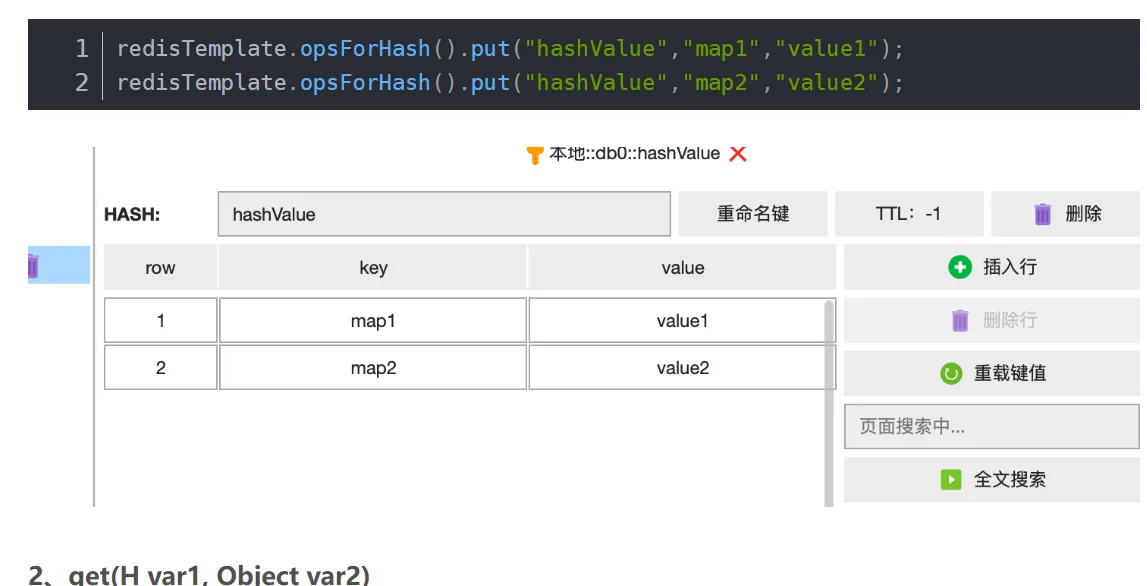1
2
3
4
5
6
7
8
9
10
11
12
13
14
15
16
17
18
19
20
21
22
23
24
25
26
27
28
29
30
31
32
33
34
35
36
37
38
39
40
41
42
43
44
45
46
47
48
49
50
51
52
53
54
55
56
57
58
59
60
61
62
63
64
65
66
67
68
69
70
71
72
73
74
75
76
77
78
79
80
81
82
83
84
85
86
87
88
89
90
91
92
93
94
95
96
97
98
99
100
101
102
103
104
105
106
107
108
109
110
111
112
113
114
115
116
117
118
119
120
121
122
123
124
125
126
127
128
129
130
131
132
133
134
135
136
137
138
139
140
141
142
143
144
145
146
147
148
149
150
151
152
153
154
155
156
157
158
159
160
161
162
163
164
165
166
167
168
169
170
171
172
173
174
175
176
177
178
179
180
181
182
183
184
185
186
187
188
189
190
191
192
193
|
@Slf4j
@Component
public class CacheClient {
private final StringRedisTemplate stringRedisTemplate;
private static final ExecutorService CACHE_REBUILD_EXECUTOR = Executors.newFixedThreadPool(10);
public CacheClient(StringRedisTemplate stringRedisTemplate) {
this.stringRedisTemplate = stringRedisTemplate;
}
public void set(String key, Object value, Long time, TimeUnit unit) {
stringRedisTemplate.opsForValue().set(key, JSONUtil.toJsonStr(value), time, unit);
}
public void setWithLogicalExpire(String key, Object value, Long time, TimeUnit unit) {
RedisData redisData = new RedisData();
redisData.setData(value);
redisData.setExpireTime(LocalDateTime.now().plusSeconds(unit.toSeconds(time)));
stringRedisTemplate.opsForValue().set(key, JSONUtil.toJsonStr(redisData));
}
public <R,ID> R queryWithPassThrough(
String keyPrefix, ID id, Class<R> type, Function<ID, R> dbFallback, Long time, TimeUnit unit){
String key = keyPrefix + id;
String json = stringRedisTemplate.opsForValue().get(key);
if (StrUtil.isNotBlank(json)) {
return JSONUtil.toBean(json, type);
}
if (json != null) {
return null;
}
R r = dbFallback.apply(id);
if (r == null) {
stringRedisTemplate.opsForValue().set(key, "", FRIEND_ALL_TTL, TimeUnit.MINUTES);
return null;
}
this.set(key, r, time, unit);
return r;
}
public <R> List<R> querywithLogicalExpireFriend(String keyPrefix, Class<R>type, Supplier<List<R>> dbFallback, Long time, TimeUnit unit){
String json = stringRedisTemplate.opsForValue().get(keyPrefix);
if (StrUtil.isBlank(json)) {
return null;
}
RedisData redisData = JSONUtil.toBean(json, RedisData.class);
List<R> r = JSONUtil.parseArray(redisData.getData()).toList(type);
LocalDateTime expireTime = redisData.getExpireTime();
if(expireTime.isAfter(LocalDateTime.now())){
return r;
}
String lockKey = FRIEND_ALL_KEY + ":lock";
boolean isLock = tryLock(lockKey);
if (isLock){
CACHE_REBUILD_EXECUTOR.submit(() -> {
try {
List<R> newR = dbFallback.get();
this.setWithLogicalExpire(keyPrefix, newR, time, unit);
} catch (Exception e) {
throw new RuntimeException(e);
}finally {
unlock(lockKey);
}
});
}
return r;
}
public <R, ID> R queryWithLogicalExpire(
String keyPrefix, ID id, Class<R> type, Function<ID, R> dbFallback, Long time, TimeUnit unit) {
String key = keyPrefix + id;
String json = stringRedisTemplate.opsForValue().get(key);
if (StrUtil.isBlank(json)) {
return null;
}
RedisData redisData = JSONUtil.toBean(json, RedisData.class);
R r = JSONUtil.toBean((JSONObject) redisData.getData(), type);
LocalDateTime expireTime = redisData.getExpireTime();
if(expireTime.isAfter(LocalDateTime.now())) {
return r;
}
String lockKey = FRIEND_ALL_KEY + id;
boolean isLock = tryLock(lockKey);
if (isLock){
CACHE_REBUILD_EXECUTOR.submit(() -> {
try {
R newR = dbFallback.apply(id);
this.setWithLogicalExpire(key, newR, time, unit);
} catch (Exception e) {
throw new RuntimeException(e);
}finally {
unlock(lockKey);
}
});
}
return r;
}
public <R, ID> R queryWithMutex(
String keyPrefix, ID id, Class<R> type, Function<ID, R> dbFallback, Long time, TimeUnit unit) {
String key = keyPrefix + id;
String shopJson = stringRedisTemplate.opsForValue().get(key);
if (StrUtil.isNotBlank(shopJson)) {
return JSONUtil.toBean(shopJson, type);
}
if (shopJson != null) {
return null;
}
String lockKey = FRIEND_ALL_KEY + id;
R r = null;
try {
boolean isLock = tryLock(lockKey);
if (!isLock) {
Thread.sleep(50);
return queryWithMutex(keyPrefix, id, type, dbFallback, time, unit);
}
r = dbFallback.apply(id);
if (r == null) {
stringRedisTemplate.opsForValue().set(key, "",FRIEND_ALL_TTL, TimeUnit.MINUTES);
return null;
}
this.set(key, r, time, unit);
} catch (InterruptedException e) {
throw new RuntimeException(e);
}finally {
unlock(lockKey);
}
return r;
}
private boolean tryLock(String key) {
Boolean flag = stringRedisTemplate.opsForValue().setIfAbsent(key, "1", 10, TimeUnit.SECONDS);
return BooleanUtil.isTrue(flag);
}
private void unlock(String key) {
stringRedisTemplate.delete(key);
}
}
|











